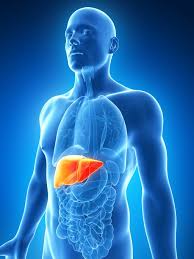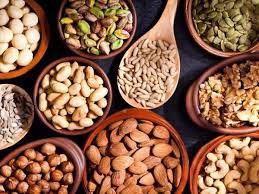
Fructose Intolerance: What causes it and how is it treated?
Fructose intolerance causes discomfort after eating certain foods. Fructose intolerance is when a person cannot tolerate fructose, a sugar found in certain foods.
Have you ever had stomach pain or discomfort after eating fruit or sugary foods? This could be a sign of fructose intolerance. This occurs when your body has trouble digesting fructose, a type of sugar found in fruits, vegetables, and many other foods. While not a serious allergy, fructose intolerance can cause bloating, gas, diarrhoea, and other digestive issues that require some dietary changes. Here’s everything you need to know about fructose intolerance, its symptoms, and how to manage it to keep your gut healthy.
What is fructose intolerance?
Fructose intolerance occurs when the body has trouble digesting or absorbing fructose, a sugar found in fruits, vegetables, and sweets. This unabsorbed fructose reaches the intestine, where gut bacteria ferment it, causing bloating, fat, and other digestive issues.
Types of fructose intolerance
There are two main types of fructose intolerance:
1. Hereditary fructose intolerance (HFI)
It is a rare disease caused by a deficiency of the aldolase B enzyme, which is necessary for fructose metabolism, according to a study published in the journal StatsPearl in 2023. This condition is present at birth and can be severe if fructose is consumed.
2. Fructose malabsorption
This is a more common condition where the small intestine is unable to absorb fructose. A 2016 study published in the Journal of Molecular and Cellular Pediatrics found that eating foods high in fructose can cause symptoms like bloating, gas, and diarrhoea.

What Causes Fructose Intolerance?
Fructose intolerance can be caused by many factors, depending on whether it is natural or acquired.
1. Hereditary fructose intolerance (HFI)
Gene mutations – HFI is caused by mutations in the ALDOB gene, which provides the instructions for the important aldolase B. Without enough aldolase B, fructose can build up in the liver, kidneys, and intestines and cause serious symptoms when consumed.
2. Fructose malabsorption
Poor fructose transport – In fructose malabsorption, the cells in the small intestine cannot transport fructose from the intestine into the bloodstream. Experts explain that this is usually due to a defect or dysfunction in the fructose transporter GLUT5.
3. Irritable bowel syndrome (IBS)
Patients with irritable bowel syndrome often have problems absorbing fructose. A study published in BMC Gastroenterology found that patients with irritable bowel syndrome (IBS) were tested for fructose and fructan intolerance. Interestingly, people who have trouble absorbing one type of sugar (fructose or fructan) may also have trouble absorbing other sugars.
3. Small intestinal bacterial overgrowth (SIBO)
Small intestinal disorders may be related to fructose absorption. A study published in the Journal of Neurogastroenterology found that people with SIBO may have more trouble absorbing fructose than healthy people.
4. Digestive issues
Experts say that diseases such as Crohn’s disease and ulcerative colitis may be caused by food allergies, including to fructose.
5. Nutrition
Eating foods high in fructose or certain types of fiber may impair the small intestine’s ability to absorb fructose, causing symptoms of malabsorption. However, more research is needed to prove this.
6. Infections
Intestinal infections can temporarily damage the intestinal lining, impairing its ability to absorb nutrients, including fructose. However, more research is needed to prove this claim.

Fructose Intolerance Symptoms
The severity of fructose intolerance symptoms can vary depending on the amount of fructose consumed and the person’s complaint. As experts explain, common symptoms of fructose intolerance are:
Gastrointestinal symptoms
- Bloating
- Natural gas
- Nausea
- Abdominal pain or cramps
- Diarrhoea
Other symptoms:
- Fatigue
- Irritability
- Headache
How is fructose intolerance treated?
Treatment for fructose intolerance involves managing the condition through dietary changes and sometimes medical treatment. The goal is to reduce symptoms and maintain a healthy diet. This is the main way to treat fructose intolerance, according to experts.
1. Low fructose consumption
The best treatment is a fructose-free diet. This includes avoiding foods that contain fructose and sugar, such as certain fruits, vegetables, sweets, and processed foods.
2. Find substitute food
Replace low-fructose foods with low-fructose foods. For example, choose fruit instead of apples or pears, and use glucose or dextrose as a sweetener instead of sweeteners containing fructose.
3. Reintroduce fructose slowly
After symptoms improve, some people may gradually reintroduce small amounts of fructose to determine their tolerance. This should be done under the guidance of a doctor.
4. Medication
Over-the-counter enzymes (such as xylose isomerase) may help some people better digest fructose, reducing symptoms when consumed in meals.
4. Personalized nutrition plan
Consulting a registered dietitian can help develop a healthy diet, one that is fructose-free while ensuring that all essential nutrients are consumed.

What should you not eat if you have fructose intolerance?
Treatment for fructose intolerance usually involves avoiding foods that contain fructose. Here is a list of foods that experts recommend avoiding or limiting.
- Fruits – apples, pears, cherries, mangoes, cucumbers, grapes.
2. Dried fruits – raisins, apricots, plums and other dried fruits. - Fruit Juice – grape juice, apple fruit and other fruit juices are high in fructose.
3. Vegetables – artichokes, asparagus, peas, broccoli, sweet corn and beets.
4. Sweeteners – sweets and honey. - Desserts and sweets – Desserts, cakes, cookies and pastries often contain high fructose corn syrup or other high fructose sweeteners.
- Snacks – Many granola bars, cereal bars, and other snacks contain added fructose.
- Sauces and Condiments – Ketchup, barbecue sauce, salad dressings and other condiments may contain high fructose corn syrup. a
- Soft drinks and sodas – Many are sweetened with high-fructose corn syrup.
- Some alcoholic beverages – Some wines and beers can contain large amounts of fructose.
- Sweetened tea and energy drinks – These may contain added fructose.
- Sweetened Cereals – Breakfast cereals often contain added sugars that are high in fructose.
- Baked Goods – Many commercially prepared breads, cakes, and other baked goods are high in fructose.
Foods to consume with caution
Some foods are rich in fructose and should be avoided, but some can be consumed according to individual tolerance:
Some fruits – berries (strawberries, blueberries), kiwi, bananas and citrus fruits (oranges, lemons).
Some vegetables – Green leafy vegetables (spinach, kale), cucumbers, bell peppers, zucchini, carrots and tomatoes can be eaten in small amounts.
Sweeteners – Glucose and dextrose are better substitutes for fructose.
Beverages – Water, herbal tea, unsweetened almond milk and coconut water.
Something to remember!
By avoiding fructose-rich foods and choosing fructose-free foods, people with fructose intolerance can manage symptoms and maintain a healthy diet. However, it is important to consult your doctor before making any changes.
